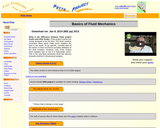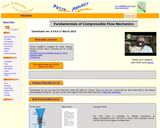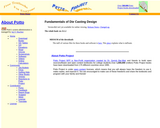
Fluid mechanics deals with the study of all fluids under static and dynamic situations. Fluid mechanics is a branch of continuous mechanics which deals with a relationship between forces, motions, and statical conditions in a continuous material. This study area deals with many and diversified problems such as surface tension, fluid statics, flow in enclose bodies, or flow round bodies (solid or otherwise), flow stability, etc. In fact, almost any action a person is doing involves some kind of a fluid mechanics problem. Furthermore, the boundary between the solid mechanics and fluid mechanics is some kind of gray shed and not a sharp distinction (see Figure 1.1 for the complex relationships between the different branches which only part of it should be drawn in the same time.). For example, glass appears as a solid material, but a closer look reveals that the glass is a liquid with a large viscosity. A proof of the glass ``liquidity'' is the change of the glass thickness in high windows in European Churches after hundred years. The bottom part of the glass is thicker than the top part. Materials like sand (some call it quick sand) and grains should be treated as liquids. It is known that these materials have the ability to drown people. Even material such as aluminum just below the mushy zone also behaves as a liquid similarly to butter. Furthermore, material particles that "behaves'' as solid mixed with liquid creates a mixture After it was established that the boundaries of fluid mechanics aren't sharp, most of the discussion in this book is limited to simple and (mostly) Newtonian (sometimes power fluids) fluids which will be defined later.
This book describes the fundamentals fluid mechanics phenomena for engineers and others. It is designed to replace all introductory textbook(s) or instructor's notes for the fluid mechanics in undergraduate classes for engineering/science students but also for technical peoples. It is hoped that the book could be used as a reference book for people who have at least some basics knowledge of science areas such as calculus, physics, etc.
- Subject:
- Applied Science
- Engineering
- Physical Science
- Physics
- Material Type:
- Textbook
- Provider:
- Potto Project
- Author:
- Genick Bar-Meir
- Date Added:
- 01/01/2011

